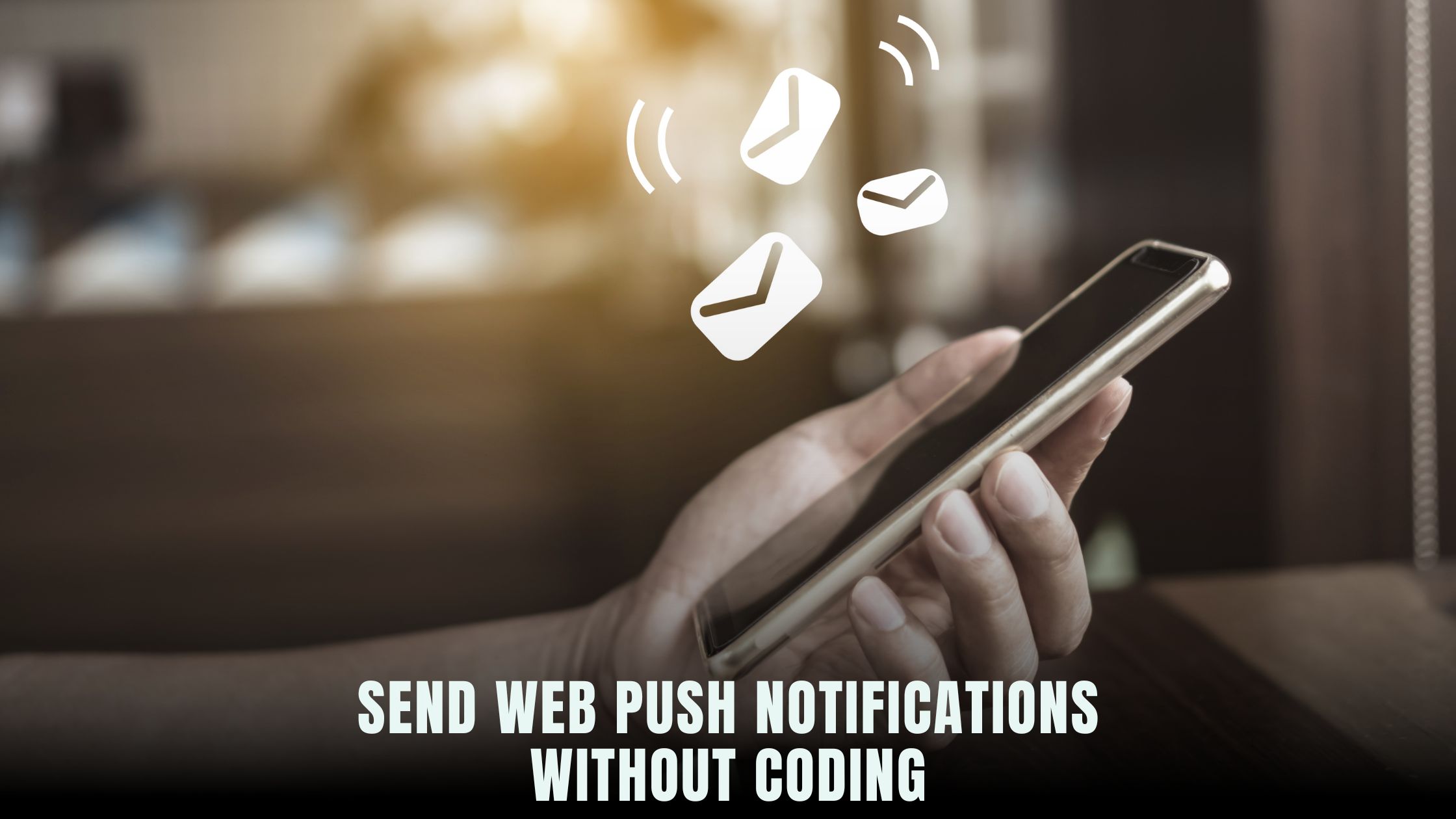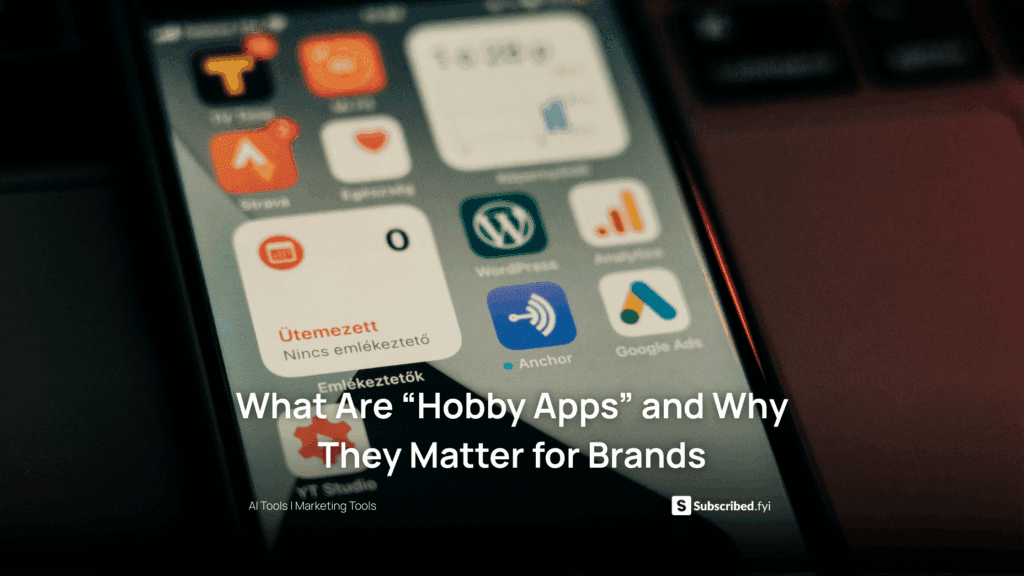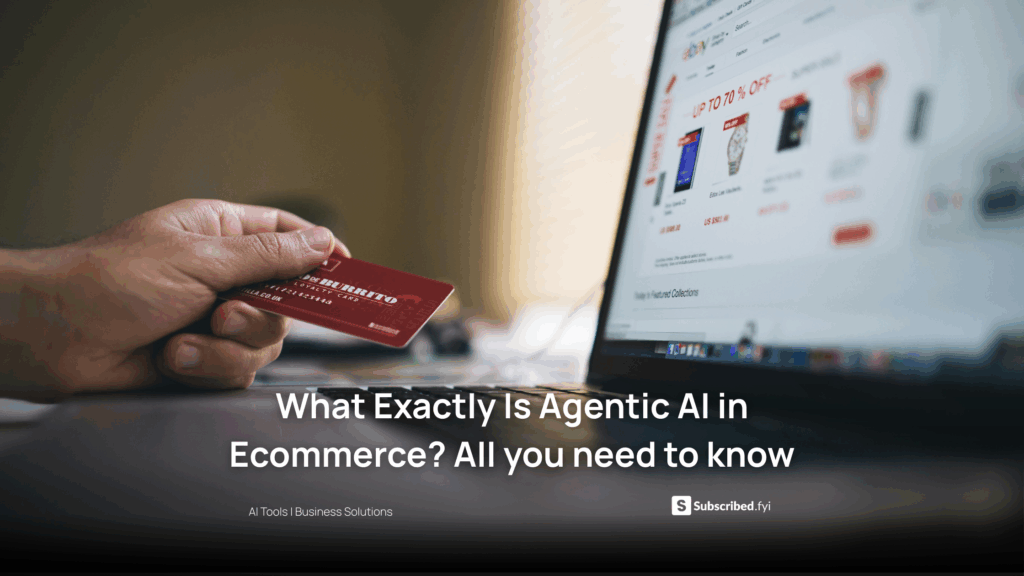How to Send Web Push Notifications Without Coding?
- WebOps Platforms Bug Tracking & Feedback Software Web Development & Design Website Builder


Sending web push notifications no longer requires a deep dive into JavaScript or server configurations. Services like Hostinger Horizons let you set up push campaigns in minutes by handling VAPID keys and subscription flows through a simple AI chat interface. Instead of wrestling with the Web Push API documentation, you describe what you need—permission prompts, test notifications, or scheduled blasts—and the platform builds and deploys the code for you. A few clicks and natural-language commands replace hours of manual scripting and environment setup.
You can also explore other AI-powered no-code builders on the Subscribed.fyi website builders page to compare features like custom templates or analytics integrations. With Horizons, you get global hosting, SSL certificates, sandbox testing, and 24/7 expert support bundled together. This means you can focus on creating compelling notification content rather than managing servers or certificates. In this guide, you’ll learn how to acquire VAPID keys, configure subscription flows, send test notifications, and monitor performance—all without writing a line of code.
Understanding Web Push Notifications
Web push notifications are short messages sent from your website to users’ browsers, even when they’re not on your site. They rely on a combination of service workers and standardized push protocols to deliver timely alerts—like new blog posts, flash sales, or appointment reminders. Unlike email, push notifications appear directly in the browser or device notification tray, garnering higher engagement rates. For businesses and solopreneurs, they provide a powerful channel to re-engage visitors, drive traffic, and boost conversions.
Implementing web push manually involves writing service worker scripts, generating VAPID key pairs, handling subscription storage, and managing message sending through a backend server. No-code platforms abstract these steps. You simply generate keys, design your notification templates, and set push triggers. Hostinger Horizons’ AI-driven workflow ensures that your service worker code, VAPID configuration, and push subscription logic all tie together seamlessly, so you avoid pitfalls like mixed content errors or broken service worker registrations.
Acquiring VAPID Keys and Certificates
VAPID (Voluntary Application Server Identification) keys authenticate your push messages with the browser push service. Generating them yourself typically requires using OpenSSL or Node.js libraries. No-code solutions simplify this: ask the AI assistant “generate VAPID key pair for my site” and receive both public and private keys ready for deployment. In Hostinger Horizons, the VAPID keys integrate automatically into your project’s environment settings, ensuring secure key management without manual file uploads or SSH access.
The platform handles SSL certificate provisioning for you, a critical step since browsers only allow push notifications on secure origins (HTTPS). Horizons’ one-click domain setup and free SSL certificates mean your site meets security requirements from the start. With keys and certificates in place, you’re ready to configure subscription flows.
Configuring the Subscription Flow
Allowing users to subscribe requires a permission prompt and the capturing of their push subscription object. You decide where and when to prompt visitors—on page load, after a button click, or as part of a specific user journey. In a no-code environment, simply instruct the AI chat “create a subscribe button that triggers the push permission prompt.” The platform generates the button, attaches the permission handler, and registers a service worker behind the scenes.
Capturing and storing the subscription object is handled automatically, packaged into your site’s backend without manual API calls. Hostinger Horizons provides a built-in database to store subscription endpoints and keys securely. If you prefer to export this data to external services like Airtable or Firebase, you can ask “sync subscriptions to my Airtable base,” and the AI configures the integration for you.
Designing and Sending a Test Notification
Before sending live campaigns, you’ll want to test your setup. No-code platforms typically offer a “send test notification” feature in the dashboard. With Hostinger Horizons, you access a sandbox preview and click “Send Test Push.” The AI generates a sample notification payload—title, body, icon, and URL—and dispatches it to your browser. This immediate feedback loop helps you verify that service workers are registered, permissions are granted, and messages appear correctly on both desktop and mobile browsers.
If you need to tweak the notification design, prompt “change icon to my-logo.png and add action button ‘View Offer’” and see updates in real time. The sandbox environment ensures tests don’t reach live users until you’re ready to publish, preventing accidental blasts during configuration.
Scheduling and Automating Notifications
Time-sensitive messages benefit from scheduled or triggered notifications. No-code solutions allow you to set up simple schedules—daily reminders, weekly summaries—or event-based triggers like new content publication. In Horizons, chat “schedule push every Monday at 9 AM for my blog subscribers” and watch the AI configure the cron job, payload, and audience segment. If you prefer event-based triggers, ask “send push when a new post is published” and the platform links your CMS webhook to the push service.
Automated workflows can include conditional logic as well. Say you want to notify only users who haven’t visited in seven days; instruct “segment subscribers who were inactive for 7 days and send re-engagement push,” and the AI sets up the filtering and messaging pipeline without manual filtering rules.
Segmenting Audiences for Targeted Messaging
Personalization boosts engagement. Rather than blasting every subscriber, you can create segments based on language, location, behavior, or custom tags. Hostinger Horizons records subscription metadata—browser locale, subscription date, and custom fields from your user database. You ask “send push to subscribers in the U.S. who speak English” or “notify users with tag ‘premium’ about feature updates.” Horizons executes these segment filters on its serverless backend, ensuring targeted delivery without exposing subscriber data in your frontend code.
Segmented notifications feel more relevant to users and drive higher click-through rates. By combining behavioral triggers with segmentation—such as “push discount to users who abandoned checkout”—you leverage timely context to re-engage visitors effectively.
Monitoring Delivery and Engagement Metrics
After sending notifications, you need to measure success. Standard analytics track delivery rates, click-throughs, and unsubscribe events. In a no-code platform, you view these metrics in a dedicated analytics dashboard. Hostinger Horizons integrates real-time charts showing push opens, clicks, and subscription growth. You can compare campaign performance side by side and export data for deeper analysis in Google Analytics or Mixpanel.
If you detect delivery failures—expired subscriptions or push service errors—Horizons surfaces error logs with stack traces and HTTP response codes. You can then clean outdated subscriptions automatically by prompting “remove invalid endpoints after 404 errors,” keeping your subscriber list healthy.
Handling Unsubscribes and Consent Management
Respecting user choice is crucial. Browsers allow users to block or revoke permissions through the UI, but you should also provide an unsubscribe mechanism within your app. No-code platforms often include a “manage subscriptions” page generated by AI. Ask “create unsubscribe page where users can opt out of push notifications,” and the platform scaffolds a page with a list of active subscriptions and a one-click unsubscribe button.
Consent management extends to GDPR and CCPA compliance. Hostinger Horizons can insert consent checkboxes and record timestamps automatically. You instruct “add consent checkbox to subscription prompt and log user consent timestamp,” ensuring you have verifiable records without manual database management.
Integrating with Third-Party Services
Web push is often part of a larger engagement strategy that includes email, SMS, and in-app messages. No-code platforms typically integrate with Zapier or native connectors for services like Mailchimp, Twilio, or Intercom. In Horizons, you simply say “when push is clicked, send user data to Mailchimp as a campaign event,” and the AI configures the Zapier workflow or native API call.
Cross-channel automation helps you orchestrate campaigns—send an email drip after a push opens or trigger an SMS reminder if a user clicks but doesn’t complete an action. These integrations ensure consistent messaging across touchpoints without juggling multiple dashboards.
Ensuring Reliability and Security
Running push notifications at scale requires reliability and security. No-code solutions abstract server management, but you still need to monitor uptime and performance. Hostinger Horizons provides built-in health checks for service worker registration, push service latency, and subscription server status. You can ask “alert me if push delivery latency exceeds 2 seconds” and receive notifications via Slack or email.
Security best practices include rotating VAPID keys periodically and restricting access to subscription endpoints. Horizons manages key rotation automatically and stores private keys in encrypted environments. You control access through role-based permissions in the dashboard, ensuring only authorized team members can modify push configurations.
Comparing No-Code Push Solutions
Several no-code platforms offer web push without coding. Comparisons often hinge on features like AI-driven setup, analytics depth, segmenting capabilities, and pricing. Tools like OneSignal provide free tiers but require manual dashboard configuration. Paid services integrate with CRMs but lack AI chat workflows. Hostinger Horizons stands out by bundling setup, hosting, AI configuration, and support into one plan. You avoid context switching between multiple vendor dashboards and can manage everything—push, backend, and site—in a unified environment.
Roadmap for Future Enhancements
As web push standards evolve, no-code platforms continue to innovate. Expect more advanced personalization—dynamic notification content based on real-time user behavior—and deeper integration with voice assistants. Hostinger Horizons plans to add AI-driven copy suggestions for push messages, predictive send-time optimization, and sentiment analysis to refine your messaging tone. The plugin ecosystem will expand to include specialized push templates for e-commerce, media alerts, and loyalty programs.
Empowering Engagement with No-Code Push
Web push notifications are a vital tool for staying top-of-mind with your audience. By harnessing no-code platforms like Hostinger Horizons, you remove technical barriers and focus on crafting timely, relevant messages. From key generation and subscription flows to scheduling, segmentation, and analytics, every step becomes manageable through AI-driven chat prompts and intuitive dashboards. You deploy secure, compliant, and high-performing push campaigns without a developer sprint, ensuring your site engages users at every touchpoint.
Bringing Web Push to Life with Hostinger Horizons
Hostinger Horizons transforms push notification setup into a simple conversation. Describe your needs—VAPID keys, permission prompts, test blasts—and watch as the AI configures service workers, handles SSL, and deploys your code to a global CDN. Real-time sandbox testing, automated analytics, and built-in integrations mean you launch with confidence and iterate on user feedback rapidly. For solopreneurs and small teams, Horizons cuts necessary setup and maintenance by up to 90%, allowing you to focus on what matters: growing your audience through timely, meaningful push messages.
Ready to Engage Users Instantly?
No-code web push setups empower anyone to send notifications with minimal effort and maximum impact. By following best practices—secure key management, clear permission prompts, targeted segmentation, and thorough analytics—you build a push strategy that delights users and drives results. Hostinger Horizons offers the AI-driven tools, hosting infrastructure, and expert support to make it happen in minutes. Start sending push notifications today and watch your engagement soar.





